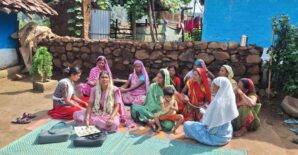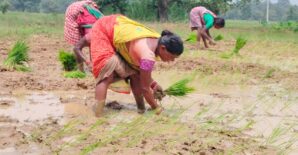
Pulses Consultation at New Delhi India
The per capita demand for pulses is declining in India. Yet they remain a cheap and an important source of protein. On the supply side, pulses’ production had hovered around 11 and 14 million tons during the last three decades. Stagnation in production has led to rise in the prices of pulses that further affected their consumption adversely. To overcome the rising prices of pulses because of demand supply gap, their imports increased substantially to the tune of 3-4 million tons during last five years.
To better understand the pulse sector in its entirety, a one-day workshop was organized by South Asia Regional Office of International Food Policy Research Institute on “Pulses for Nutrition in India: Changing Patterns from Farm-to-Fork”, on January 14, 2014 in New Delhi, India. The workshop presented studies that covered the pulse sector from farm to fork comprehensively. All the segments of the pulses’ sector including production, consumption, price formation, international trade, processing and value addition, and innovations comprising private as well as public sector in strengthening the entire pulse value chain were presented. These studies were designed to better understand the changing dynamics in the pulses sector and explore opportunities for meeting their availability through increased production, enhanced trade and improved technical and marketing efficiency.
Traditionally in India, with relatively more focus accorded to food grains, especially rice and wheat, the pulses were relegated to marginal environments. Consequently, over the years despite many focused programs, there were only slight changes in the production of pulses. However, recent initiatives through National Food Security Mission and higher minimum support prices led to leapfrog in production to 18 million tons. However, weak technology delivery mechanisms, and continuing low profitability of the sector have failed the arrest the shifting of pulses areas to more remunerative crops.
The inaugural address for the workshop was by Dr Y K Alagh, chancellor, Central University of Gujarat who had also been the leader of government pulse initiatives in the country. In his inaugural address Dr Alagh emphasized that there is an urgent need to blend domestic price policy with tariff policy such that domestic prices of pulses stabilize and that can thereby ensure attractive returns to pulse producers. More specifically import duties on pulses needed to be calibrated to the demand and supply situation in a timely fashion.
In a session on the way forward for the pulses sector in India, Dr Ashok Gulati, chairman, Commission of Agricultural Costs and Prices (CACP) stressed on the need for procuring pulses under public distribution system to reduce market risk for farmers and ensure supply for their increased consumption. He cited the example of soybean as potentially the cheapest source of protein in the country and the role of pulses as a supplier of protein has to be looked in a comparative context. The scope for pulses or other sources of protein has to be looked in a situation where special interests in the dairy sector preclude the possibility of soya based products such as tofu being adopted by the large scale system of dairy cooperatives in India.
Dr John McDermott, director, CGIAR’s Agriculture for Nutrition and Health (A4NH), IFPRI stated that pulses play an important role in farming system, these improve soil fertility and can be potential source of higher income for farmers especially in dryland areas. He emphasized for creating a strong mechanism to focus on nutrition security through improved pulse value chains, and efficient processing sector. Dr Laurette Dube, founding chair and scientific director, McGill World Platform for Health and Economic Convergence, emphasized on the need for convergent innovation in pulses to increase production, income and nutritional security.
Dr P K Joshi, director, South Asia Regional Office, IFPRI concluded the workshop by adding the need for need-based technologies in pulses for favorable and marginal locations, traditional and non-traditional area, and production of commodities for import substitution and for the global markets. He also stressed on effective procurement policies of pulses, as have been initiated by Chhattisgarh and Haryana, along with effective medium and long-term trade policies to promote supply and consumption of pulses.
The workshop was attended by donors, researchers, private sector and media. The workshop was based on a studies conducted by IFPRI-South Asia Office under the CGIAR’s Research Program on Agriculture for Nutrition and Health. Check out the presentations of the workshop



